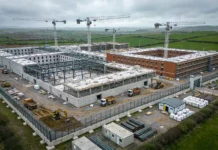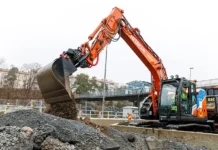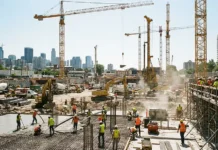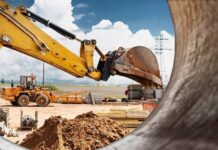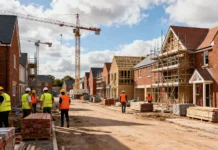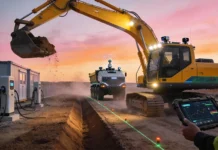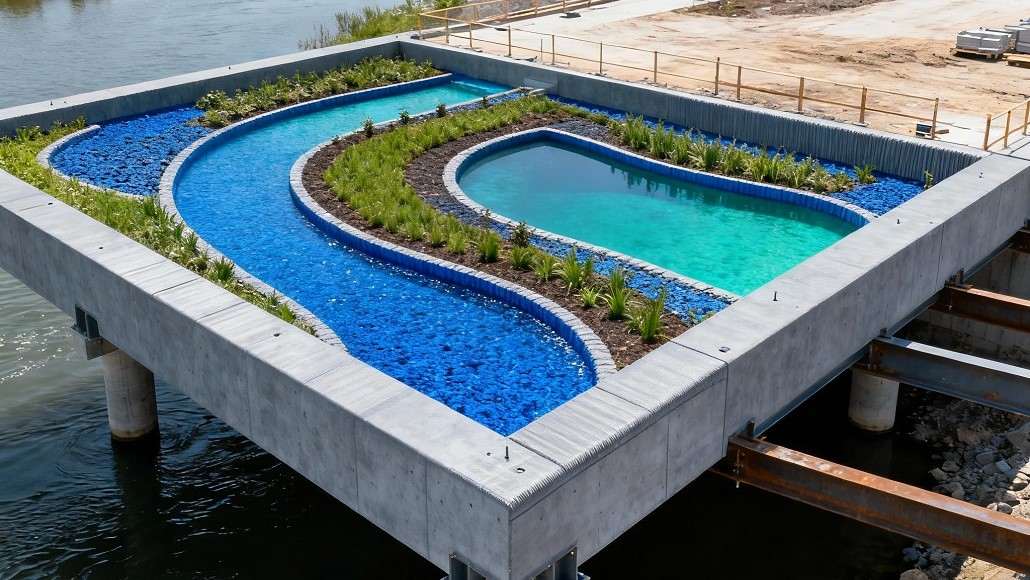The Evolution of Climate-Conscious Infrastructure
The construction industry stands at a critical inflection point. Rising sea levels, intensifying storms, prolonged droughts, and unpredictable weather patterns have fundamentally altered how engineers approach building and infrastructure design. What was once considered “future-proofing” is now an immediate necessity. The conversation around resilient construction has shifted from optional sustainability measures to core engineering principles that determine project viability and longevity.
Climate-ready infrastructure design represents a paradigm shift in how architects and engineers conceptualize the built environment. Rather than designing structures to withstand historical weather patterns, contemporary resilience requires anticipating conditions that may not yet have occurred. This forward-thinking approach integrates climate science, materials innovation, and adaptive design strategies into every phase of project development.
Understanding Resilience in Construction Context
Defining Infrastructure Resilience
Resilience in infrastructure transcends simple durability. A resilient structure maintains functionality during extreme conditions, recovers quickly from disturbances, and adapts to changing environmental circumstances. The construction industry increasingly recognizes that resilient construction must address multiple stressors simultaneously—thermal stress, water intrusion, wind loading, and soil instability all present interconnected challenges requiring integrated solutions.
Traditional engineering focused on designing for worst-case scenarios based on historical data. Modern resilient construction instead employs adaptive frameworks that accommodate uncertainty and variability. This distinction proves critical in regions experiencing rapid climate shifts where historical precedent offers diminishing guidance.
The economic argument for climate-ready infrastructure design strengthens yearly. Infrastructure failures due to climate events cost the global economy billions annually. The Federal Reserve estimates that climate-related infrastructure damage could reduce annual GDP growth, making resilience not merely an environmental imperative but an economic necessity. Municipalities and developers increasingly recognize that investing in resilience during construction phases costs substantially less than retrofitting or recovering from failures.
Advanced Materials Driving Infrastructure Innovation
High-Performance Concrete Solutions
Concrete remains the world’s most widely used construction material, yet traditional formulations present vulnerabilities to climate stressors. Advanced concrete compositions now incorporate supplementary cementitious materials, recycled aggregates, and engineered additives that enhance durability while reducing carbon emissions.
Permeable pavements represent one innovation transforming urban infrastructure. Rather than creating impervious surfaces that exacerbate flooding during intense rainfall, permeable systems allow water infiltration, reducing runoff while replenishing groundwater. These solutions prove particularly valuable in climate adaptation strategies for urban areas facing increased precipitation variability.
Self-healing concrete technologies employ capsules of healing agents that rupture when cracks form, automatically sealing minor damage before moisture penetration occurs. This innovation extends infrastructure lifespan significantly, reducing maintenance requirements and lifecycle costs. Some formulations incorporate bacterial spores that activate in response to water infiltration, creating biological healing mechanisms that maintain structural integrity.
Composite Materials for Enhanced Performance
Fiber-reinforced polymers (FRP) offer exceptional strength-to-weight ratios and superior corrosion resistance compared to traditional materials. In coastal regions vulnerable to saltwater intrusion and high-corrosion environments, FRP reinforcement in concrete structures prevents the rebar degradation that typically limits infrastructure lifespan. These materials also perform exceptionally well in seismic applications, providing the flexibility required for earthquake-resistant design.
Engineered timber solutions bring renewed focus to sustainable construction materials. Cross-laminated timber (CLT) and mass timber technologies enable tall wood structures with predictable fire performance and impressive structural capacity. Unlike concrete’s thermal mass disadvantages in certain climates, timber’s natural insulating properties enhance energy efficiency while providing the structural resilience required for modern construction.
Thermal Management Materials
Climate-ready infrastructure increasingly incorporates phase-change materials (PCMs) that absorb and release thermal energy, stabilizing interior temperatures during extreme weather fluctuations. Building integrated photovoltaics (BIPV) serve dual functions—generating renewable energy while providing weather protection and thermal regulation. These multifunctional materials reduce mechanical system stress during peak demand periods when grid reliability faces greatest pressure.
Green infrastructure materials, including living roofs and wall systems, provide thermal buffering, stormwater management, and enhanced urban biodiversity. Beyond aesthetic benefits, these bioengineered surfaces reduce the heat island effect in urban areas, lowering ambient temperatures and reducing cooling demands during extreme heat events.
Climate-Adaptive Design Strategies
Holistic Site Planning and Analysis
Successful resilient construction begins with comprehensive environmental assessment. Rather than standard site surveys, contemporary practice demands climate risk mapping that projects precipitation patterns, temperature extremes, flooding probability, and potential erosion scenarios across a structure’s anticipated lifespan.
Blue-green infrastructure planning integrates water management into overall site design. Constructed wetlands, retention ponds, rain gardens, and permeable surfaces work synergistically to manage stormwater while providing ecological benefits and aesthetic value. This systems-based approach to resilient construction proves far more effective than isolated drainage solutions.
Elevation and flood-resistant design have transitioned from niche practices to standard considerations in vulnerable regions. Elevated structures, deployable flood barriers, and amphibious buildings that float during inundation represent sophisticated approaches to climate adaptation. These design strategies acknowledge that flooding will occur in certain locations and prioritizes maintaining functionality and minimizing damage rather than attempting complete exclusion.
Structural Design for Environmental Extremes
Modern climate-ready infrastructure design incorporates enhanced wind resistance appropriate to projected storm intensities. Aerodynamic considerations, redundant lateral bracing systems, and connection details designed to accommodate extreme loads represent standard practice rather than premium specifications.
Seismic design principles increasingly inform general resilient construction practices. The flexibility and damping mechanisms engineered for earthquake resistance prove equally valuable for wind and thermal stress accommodation. Base isolation systems, tuned mass dampers, and flexible connection details allow structures to move dynamically without failure.
Thermal expansion planning now accounts for projected temperature ranges that exceed historical maxima. Material selections, joint design, and structural systems accommodate expansion cycles without stress concentration or differential settlement that could compromise performance.
Sustainability and Long-Term Durability
The relationship between sustainability and resilience strengthens continuously. Sustainable materials typically outperform conventional alternatives in resilience metrics, while resilient design inherently reduces lifecycle environmental impacts through extended service life and reduced maintenance requirements.
Life-cycle assessment (LCA) tools now guide resilient construction decisions by quantifying environmental impacts across entire infrastructure lifespans. This comprehensive perspective demonstrates that initial material selections profoundly influence long-term sustainability outcomes. Low-carbon materials that maintain integrity across decades deliver superior environmental performance compared to high-embodied-carbon solutions requiring frequent replacement.
Circular economy principles increasingly inform resilient infrastructure design. Structures designed for disassembly, material recovery, and adaptive reuse extend beyond single-use functionality. This approach aligns with climate goals while acknowledging that infrastructure must remain viable through uncertain futures where functional requirements may shift.
Implementation and Future Directions
Organizations leading in resilient construction invest substantially in training and technology adoption. Building Information Modeling (BIM) enables sophisticated simulation of climate scenarios, allowing teams to test design assumptions and optimize performance before construction begins. Digital twins create virtual replicas of physical infrastructure, facilitating predictive maintenance and adaptive management throughout operational lifespans.
The construction industry gradually embraces climate-ready infrastructure design as regulatory frameworks tighten and climate-related insurance costs escalate. Forward-thinking municipalities now mandate resilience considerations in development approvals, while innovative financing mechanisms reward climate-adaptive projects through preferential lending terms.
Investment in climate-ready infrastructure design today represents prudent risk management and environmental stewardship combined. As climate variability accelerates, infrastructure resilience will transition from competitive advantage to absolute necessity, making early adoption a strategic imperative for developers, builders, and communities alike.



